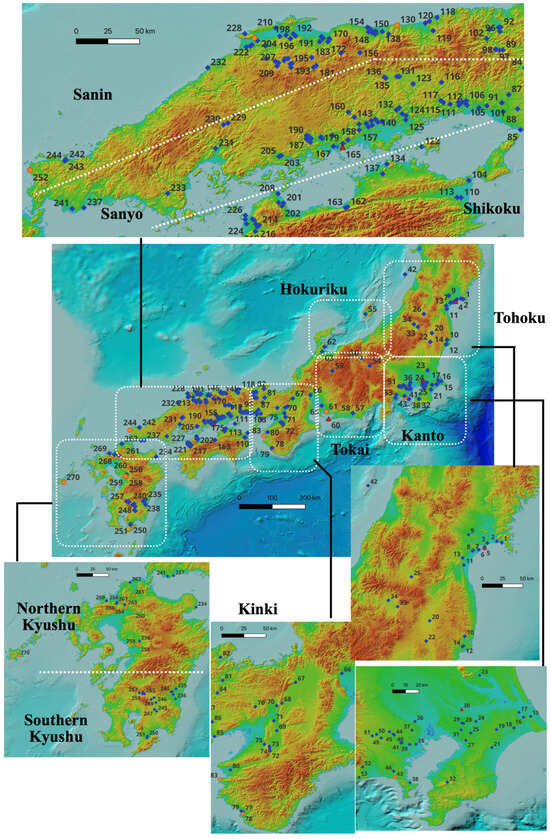Journal Description
Humans
Humans
is an international, peer-reviewed, open access journal on anthropology published quarterly online by MDPI.
- Open Access— free for readers, with article processing charges (APC) paid by authors or their institutions.
- Rapid Publication: manuscripts are peer-reviewed and a first decision is provided to authors approximately 20 days after submission; acceptance to publication is undertaken in 7.2 days (median values for papers published in this journal in the second half of 2023).
- Recognition of Reviewers: APC discount vouchers, optional signed peer review, and reviewer names are published annually in the journal.
Latest Articles
Macro-Scale Population Patterns in the Kofun Period of the Japanese Archipelago: Quantitative Analysis of a Larger Sample of Three-Dimensional Data from Ancient Human Crania
Humans 2024, 4(2), 131-147; https://doi.org/10.3390/humans4020008 - 02 Apr 2024
Abstract
►
Show Figures
The present study collected a larger set of three-dimensional data on human crania from the Kofun period (as well as from previous periods, i.e., the Jomon and Yayoi periods) in the Japanese archipelago (AD 250 to around 700) than previous studies. Three-dimensional geometric
[...] Read more.
The present study collected a larger set of three-dimensional data on human crania from the Kofun period (as well as from previous periods, i.e., the Jomon and Yayoi periods) in the Japanese archipelago (AD 250 to around 700) than previous studies. Three-dimensional geometric morphometrics were employed to investigate human migration patterns in finer-grained phases. These results are consistent with those of previous studies, although some new patterns were discovered. These patterns were interpreted in terms of demic diffusion, archaeological findings, and historical evidence. In particular, the present results suggest the presence of a gradual geological cline throughout the Kofun period, although the middle period did not display such a cline. This discrepancy might reflect social changes in the middle Kofun period, such as the construction of keyhole-shaped mounds in the peripheral regions. The present study implies that a broader investigation with a larger sample of human crania is essential to elucidating macro-level cultural evolutionary processes.
Full article
Open AccessEssay
“Creative Anthropology” as a Unit for Knowing: Epistemic Object and Experimental System in Research-Creation “in” Clay
by
Yanik Potvin
Humans 2024, 4(1), 108-130; https://doi.org/10.3390/humans4010007 - 15 Mar 2024
Abstract
This essay takes advantage of the current context of superdiversity to define a form of hybrid heuristics between North American anthropology and research-creation “in” the arts. In an attempt to alleviate the epistemological disaster described by Gregory Bateson as the loss of the
[...] Read more.
This essay takes advantage of the current context of superdiversity to define a form of hybrid heuristics between North American anthropology and research-creation “in” the arts. In an attempt to alleviate the epistemological disaster described by Gregory Bateson as the loss of the unity of the biosphere and humanity, I position myself within a nomothetic perspective of Boasian anthropology and a postqualitative approach to research-creation. My research-creation proposes clay as an epistemic object and develops a creative methodology in the form of an experimental system that borrows from the following two types of change observable in living organisms: static and schismatic changes. The artistic activities, presented as two heuristic cycles, seek to broaden the self-reflexivity inherent in the use of clay by human groups. They provoke decentring leading to a loss of control where a new identity has to be defined. This reveals itself in terms of system thinking as the reconstruction of a new reality that is defined neither entirely by my artistic practice nor entirely by my theoretical framework derived from anthropology. It is a “place of passage” between both. It is a new identity that can be defined by the “change of change” that I call “creative anthropology”. This transdisciplinary approach introduces a “second glance” into anthropological research and opens up breaches through research-creation. It works to develop new narratives and test posthumanism in the field of my artistic practice.
Full article
(This article belongs to the Special Issue Systems Thinking in Anthropology: Understanding Cultural Complexity in the Era of Super-diversity)
►▼
Show Figures

Figure 1
Open AccessArticle
Husserlian Neurophenomenology: Grounding the Anthropology of Experience in Reality
by
Charles D. Laughlin
Humans 2024, 4(1), 91-107; https://doi.org/10.3390/humans4010006 - 17 Feb 2024
Abstract
Anthropology has long resisted becoming a nomothetic science, thus repeatedly missing opportunities to build upon empirical theoretical constructs, choosing instead to back away into a kind of natural history of sociocultural differences. What is required are methods that focus the ethnographic gaze upon
[...] Read more.
Anthropology has long resisted becoming a nomothetic science, thus repeatedly missing opportunities to build upon empirical theoretical constructs, choosing instead to back away into a kind of natural history of sociocultural differences. What is required are methods that focus the ethnographic gaze upon the essential structures of perception as well as sociocultural differences. The anthropology of experience and the senses is a recent movement that may be amenable to including a partnership between Husserlian phenomenology and neuroscience to build a framework for evidencing the existence of essential structures of consciousness, and the neurobiological processes that have evolved to present the world to consciousness as adaptively real. The author shows how the amalgamation of essences (sensory objects, relations, horizons, and associated intuitions) and the quest for neural correlates of consciousness can be combined to augment traditional ethnographic research, and thereby nullify the “it’s culture all the way down” bias of constructivism.
Full article
Open AccessArticle
Speaking Truth to Power: Toward a Forensic Anthropology of Advocacy and Activism
by
Donovan M. Adams, Juliette R. Bedard, Samantha H. Blatt, Eman Faisal, Jesse R. Goliath, Grace Gregory-Alcock, Ariel Gruenthal-Rankin, Patricia N. Morales Lorenzo, Ashley C. Smith, Sean D. Tallman, Rylan Tegtmeyer Hawke and Hannah Whitelaw
Humans 2024, 4(1), 66-90; https://doi.org/10.3390/humans4010005 - 14 Feb 2024
Abstract
Over the years, the field of forensic anthropology has become more diverse, bringing unique perspectives to a previously homogeneous field. This diversification has been accompanied by recognizing the need for advocacy and activism in an effort to support the communities we serve: marginalized
[...] Read more.
Over the years, the field of forensic anthropology has become more diverse, bringing unique perspectives to a previously homogeneous field. This diversification has been accompanied by recognizing the need for advocacy and activism in an effort to support the communities we serve: marginalized communities that are often overrepresented in the forensic population. As such, forensic anthropologists see the downstream effects of colonialism, white supremacy, inequitable policies, racism, poverty, homophobia, transphobia, gun violence, and misogyny. Some argue that advocacy and activism have no place in forensic anthropological praxis. The counterarguments for engaging in advocacy and activism uphold white, heterosexual, cisgender, and ableist privilege by arguing that perceived objectivity and unbiased perspectives are more important than personally biasing experiences and positionality that supposedly jeopardize the science and expert testimony. Advocacy and activism, however, are not new to the practice of anthropology. Whether through sociocultural anthropology, archaeology, or other areas of biological anthropology, activism and advocacy play an important role, using both the scientific method and community engagement. Using a North American approach, we detail the scope of the issues, address how advocacy and activism are perceived in the wider discipline of anthropology, and define ways in which advocacy and activism can be utilized more broadly in the areas of casework, research, and education.
Full article
(This article belongs to the Special Issue Contemporary Concerns and Considerations in Forensic Anthropology)
Open AccessEssay
System Intertwining and Immigration Action Plans: The Case of a Provincial Funding Program in Quebec (Canada)
by
Jorge Frozzini
Humans 2024, 4(1), 50-65; https://doi.org/10.3390/humans4010004 - 31 Jan 2024
Abstract
The ability of political power to be deployed on several levels of governance is a key element of public administration, insofar as it enables the various needs of the population to be met. However, conflicts of competence, jurisdiction or vision can arise when
[...] Read more.
The ability of political power to be deployed on several levels of governance is a key element of public administration, insofar as it enables the various needs of the population to be met. However, conflicts of competence, jurisdiction or vision can arise when it comes to articulating these different levels of management or intervention, particularly when policies with a broader scope are applied to local situations, thus proving ill suited to the realities experienced on the ground. This essay, with an example in the province of Quebec, illustrates how the provincial and municipal levels of governance—each with differing visions and objectives—are confronted with dilemmas respecting the constraints imposed by their levels of government. Through a systemic point of view, I show how intertwining systemic levels can produce conflicts since each has its own logic. This is explained with the example of a text-based mediated organization conducted by the “Programme d’appui aux collectivités” (PAC). The essay also identifies some challenges faced by civil servants working at two different levels of government as well as the place of the idea of resilience, and proposes recommendations.
Full article
(This article belongs to the Special Issue Systems Thinking in Anthropology: Understanding Cultural Complexity in the Era of Super-diversity)
Open AccessArticle
Understanding through the Numbers: Number Systems, Their Evolution, and Their Perception among Kula People from Alor Island, Southeastern Indonesia
by
Shiyue Wu and Francesco Perono Cacciafoco
Humans 2024, 4(1), 34-49; https://doi.org/10.3390/humans4010003 - 17 Jan 2024
Cited by 1
Abstract
►▼
Show Figures
This paper aims at documenting and reconstructing the linguistic processes generating and substantiating the use of number systems, numbers in general, elementary arithmetic, and the related concepts and notions among the Kula people from Alor Island, Southeastern Indonesia. The Kula is a Papuan
[...] Read more.
This paper aims at documenting and reconstructing the linguistic processes generating and substantiating the use of number systems, numbers in general, elementary arithmetic, and the related concepts and notions among the Kula people from Alor Island, Southeastern Indonesia. The Kula is a Papuan population from the Alor–Pantar Archipelago (Timor area). The name of their language, Kula (or Kola), corresponds to the ethnonym. The language is, currently, endangered and not completely documented. At the level of linguistic features, numeral systems and the terms for numerals from Eastern Alor exhibit, to some extent, unique characteristics, if compared to other languages spoken in other sectors of the island. Therefore, the Kula numbering system is not only significant at the lexicological and lexicographic level, but also represents the essential role of cognitive strategies (e.g., the choice of the base for the numbering systems and the visual representation of counting with the aid of actual ‘objects’, like hands and fingers) in the coinage of numerical terms among the local speakers. Indeed, the development of numeral systems reflects the evolution of human language and the ability of humans to construct abstract numerical concepts. The way numerals are encoded and expressed in a language can impact the patterns according to which numerical notions are conceptualized and understood. Different numeral systems can indicate variations in cognitive processes involving notions of quantities and measurements. Therefore, the structure and characteristics of a numeral system may affect how numeral concepts are mentally represented and developed. This paper focuses on the number system of the Kula people and the lexical units used by the local speakers to indicate (and to explain) the numbers, with the related concepts, notions, and symbolism. The investigation delves into the degrees of abstraction of the Kula numeral system and tries to ascertain its origins and reconstruct it. Moreover, the article applies to the analysis a comparative approach, which takes into account several Papuan and Austronesian languages from Alor Island and Eastern Timor, with the dual aim of investigating, at a preliminary level, a possible common evolution and/or divergent naming processes in local numbering systems and their historical–linguistic and etymological origins.
Full article
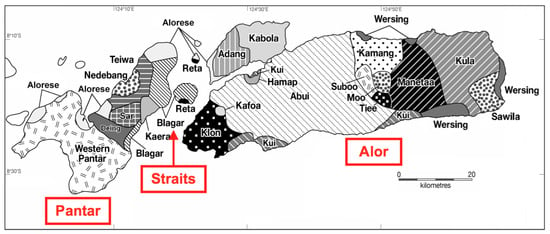
Figure 1
Open AccessHypothesis
Unintentional Evolution: The Rise of Reciprocal Altruism
by
Sergio Da Silva and Sergio Bonini
Humans 2024, 4(1), 22-33; https://doi.org/10.3390/humans4010002 - 31 Dec 2023
Abstract
►▼
Show Figures
In this study, we propose a groundbreaking hypothesis for the evolution of reciprocal altruism, suggesting its emergence from random encounters characterized by theft rather than the traditionally accepted cooperative reciprocation and intertemporal choice. We challenge the conventional theory, critiquing its circular reasoning that
[...] Read more.
In this study, we propose a groundbreaking hypothesis for the evolution of reciprocal altruism, suggesting its emergence from random encounters characterized by theft rather than the traditionally accepted cooperative reciprocation and intertemporal choice. We challenge the conventional theory, critiquing its circular reasoning that presupposes cooperation to explain its own origin. Our approach posits that theft, when passively tolerated during times of abundance, does not negatively impact survival and reproduction. This leads to a novel understanding of cooperation as a form of “tolerated theft”. To support our theory, we developed a Python-based simulation model that succinctly demonstrates how this mechanism could operate. Our key finding is that in environments where theft is tolerated, offspring may evolve to overlook such acts, eventually emerging as reliable reciprocators in times of scarcity. This hypothesis, while potentially controversial due to its originality, opens up new perspectives on the accidental evolution of reciprocal altruism and encourages a reevaluation of the fundamental mechanisms driving cooperative behaviors.
Full article
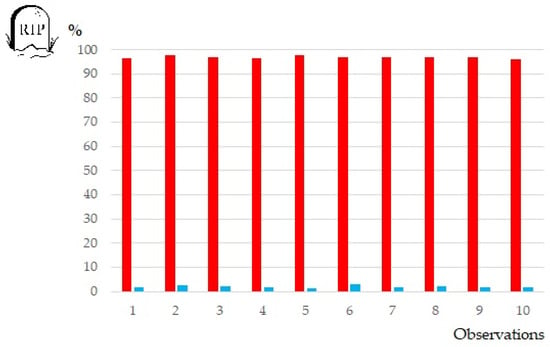
Figure 1
Open AccessEssay
A Reflection on Paradoxes and Double Binds in the Workplace in the Era of Super-Diversity
by
Daniel Côté
Humans 2024, 4(1), 1-21; https://doi.org/10.3390/humans4010001 - 21 Dec 2023
Abstract
Occupational health and safety (OHS) is a largely technical field, still guided by a biomedical model of health that seeks to isolate factors that cause injury. Despite a growing literature on organisational and managerial factors influencing occupational health, their full integration into the
[...] Read more.
Occupational health and safety (OHS) is a largely technical field, still guided by a biomedical model of health that seeks to isolate factors that cause injury. Despite a growing literature on organisational and managerial factors influencing occupational health, their full integration into the OHS concept has been slow. A broader understanding is still needed to recognise the restructuring of work and the link between well-being at work and management style. In the context of a rapidly changing world of work, increasing workforce diversity, and inequality, OHS needs to take account of the social sciences and humanities to broaden its reductionist vision. Occupational illnesses, distress, and suffering, especially in relation to relational or organisational issues, have no initial cause or specific ontology; they result from a long-standing process or repetitive relational pattern that needs to be exposed and understood in greater depth, considering contextual factors and dynamics. Using the authors’ anthropological backgrounds and the basic principles of the double bind theory developed many decades ago by Gregory Bateson and his colleagues at the Palo Alto School of Communication, we propose a reflection on pragmatic paradoxes or double bind situations in the workplace (which can be briefly defined as the presence of contradictory or conflicting demands or messages), their potential impact on workers’ health and well-being, and how to resolve them. This paper sought to explore the world of pragmatic paradoxes and double binds by discussing different categories, types, or forms of paradoxes/double binds that occur in the context of occupational health and their underlying mechanisms. It also includes a discussion of the possible link to the concept of super-diversity, as it too is associated with migration channels, employment, gendered flows, and local systems. Finally, we discuss the practical implications of this understanding for health professionals, researchers, and policymakers, from a perspective of promoting more holistic and context-sensitive interactional approaches to occupational health.
Full article
(This article belongs to the Special Issue Systems Thinking in Anthropology: Understanding Cultural Complexity in the Era of Super-diversity)
Open AccessComment
Racial Bias in Forensic Decision Making. Comment on Yim, A.-D.; Passalacqua, N.V. A Systematic Review and Meta-Analysis of the Effects of Race in the Criminal Justice System with Respect to Forensic Science Decision Making: Implications for Forensic Anthropology. Humans 2023, 3, 203–218
by
Itiel E. Dror
Humans 2023, 3(4), 319-320; https://doi.org/10.3390/humans3040024 - 28 Nov 2023
Abstract
A “Systematic Review and Meta-Analysis of the Effects of Race in the Criminal Justice System” [...]
Full article
Open AccessEssay
Systems Theory and Intercultural Communication: Methods for Heuristic Model Design
by
Sylvie Genest
Humans 2023, 3(4), 299-318; https://doi.org/10.3390/humans3040023 - 23 Nov 2023
Abstract
This article focuses on methods for designing heuristic models within the paradigm of systems theory and in the disciplinary context of intercultural communication. The main question arises from the striking observation that common language is insufficient to develop knowledge about human communication, especially
[...] Read more.
This article focuses on methods for designing heuristic models within the paradigm of systems theory and in the disciplinary context of intercultural communication. The main question arises from the striking observation that common language is insufficient to develop knowledge about human communication, especially when many factors of complexity (such as ambiguity, paradoxes, or uncertainty) are involved in the composition of an abstract research object. This epistemological, theoretical, and methodological problem is one of the main challenges to the scientificity of anthropological theories and concepts on culture. Moreover, these questions lie at the heart of research on intercultural communication. Authors and theorists in the complexity sciences have already stressed the need, in such cases, to think in terms of models or semiotic representations, since these tools of thought can mediate much more effectively than unformalized language between the heterogeneous set of perceptions arising from the field of experience, on the one hand, and the philosophical principles that organize speculative thought, on the other. This sets the scene for a reflection on the need to master the theory of heuristic models when it comes to developing scientific knowledge in the field of intercultural communication. In this essay, my first aim is to make explicit the conditions likely to ensure the heuristic value of a model, while my second aim is to clarify the operational function and required level of abstraction of certain terms, such as heading, concept, category, model, and system that are among the most commonly used by academics in their descriptive accounts or explanatory hypotheses. To achieve this second objective, I propose to create cognitive meta-categories to identify the three (nominal, cardinal, or ordinal) roles of words in the reference grids that we use to classify our ideas and to specify how to use these meta-categories in the construction of our heuristic models. Alongside the theoretical presentation, examples of application are provided, almost all of which are drawn from my own research into the increased cultural vigilance of the majority population in Québec since the reasonable accommodation crisis in this French-speaking province of Canada. The typology I propose will perhaps help to avoid the confusion regularly committed by authors who attribute only cosmetic functions to words that nevertheless have a highly heuristic value and who forget to consider the logical leaps of their theoretical thinking in the construction of heuristic models.
Full article
(This article belongs to the Special Issue Systems Thinking in Anthropology: Understanding Cultural Complexity in the Era of Super-diversity)
Open AccessArticle
Talking about Difference: Cross-Cultural Comparison and Prejudice in Anthropology and Beyond
by
Bob W. White, Mathilde Gouin-Bonenfant and Anthony Grégoire
Humans 2023, 3(4), 283-298; https://doi.org/10.3390/humans3040022 - 21 Nov 2023
Abstract
In recent years, the question of “difference” has become a central feature of public debate and social concern, especially in the context of transnational migration. The underlying question that we attempt to answer in this article is: how can we talk about difference
[...] Read more.
In recent years, the question of “difference” has become a central feature of public debate and social concern, especially in the context of transnational migration. The underlying question that we attempt to answer in this article is: how can we talk about difference without reinforcing prejudice? Starting from the observation that perceptions and representations of difference have an impact on the way that individuals and groups interact with each other in increasingly diverse urban environments, we argue that a systemic approach to the analysis of intercultural situations gives us a unique window into emerging discourses and evolving norms about difference. After a brief historical overview of debates surrounding cross-cultural comparison in anthropology, we consider how various fields outside of anthropology have drawn inspiration from anthropology in order to gain a deeper understanding of intercultural dynamics in various professional settings. This article also examines several anthropological concepts that have been used as tools to theorize cross-cultural comparison, and how participants in a new research methodology use the systemic notion of “cultural variables” to resolve the basic paradox underlying pluralist philosophy and practice.
Full article
(This article belongs to the Special Issue Systems Thinking in Anthropology: Understanding Cultural Complexity in the Era of Super-diversity)
Open AccessArticle
A Local Cheese: The Affective Economy of Food Embeddedness in the Italian Western Alps
by
Michele Filippo Fontefrancesco
Humans 2023, 3(4), 271-282; https://doi.org/10.3390/humans3040021 - 10 Nov 2023
Abstract
►▼
Show Figures
This research delves into the intricate relationship between objects and communities, focusing on the central question: Can an object, such as cheese, contribute to the development and structure of a community? The paper explores the affective economy of the Formatge of San Lazzaro
[...] Read more.
This research delves into the intricate relationship between objects and communities, focusing on the central question: Can an object, such as cheese, contribute to the development and structure of a community? The paper explores the affective economy of the Formatge of San Lazzaro in the Italian Western Alps, exploring the product’s role as a cultural resource and community builder. Specifically, the article analyzes the connection between product and territory that underlies the production of local food and suggests that a product can be called “local” when it is part of the community, an integral part of a network of affective, cognitive, and spatial relationships that connect a territory through time and space. Thus, it explains the cultural significance of products for territories and why they represent a resource not only economically but also as culturally resilient.
Full article
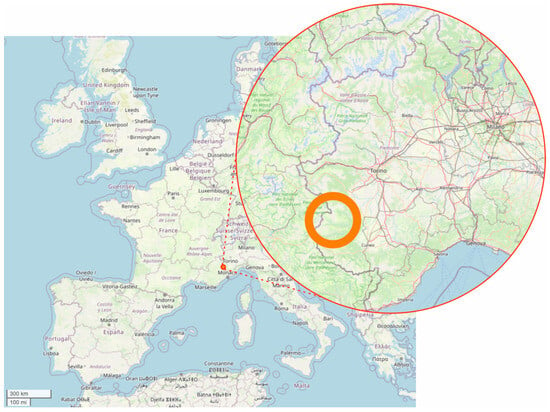
Figure 1
Open AccessEssay
Speaking of Sex: Critical Reflections for Forensic Anthropologists
by
Taylor M. Flaherty, Liam J. Johnson, Katharine C. Woollen, Dayanira Lopez, Katherine Gaddis, SaMoura L. Horsley and Jennifer F. Byrnes
Humans 2023, 3(4), 251-270; https://doi.org/10.3390/humans3040020 - 18 Oct 2023
Cited by 1
Abstract
Forensic anthropologists have a responsibility to appropriately relay information about a decedent in medicolegal reports and when communicating with the public. The terms ‘sex’ and ‘sex estimation’ have been applied with numerous, inconsistent definitions under the guise that sex—a broad, complex concept—can be
[...] Read more.
Forensic anthropologists have a responsibility to appropriately relay information about a decedent in medicolegal reports and when communicating with the public. The terms ‘sex’ and ‘sex estimation’ have been applied with numerous, inconsistent definitions under the guise that sex—a broad, complex concept—can be reduced to a female/male binary. This binary does not reflect biocultural realities and harms those whose bodies do not meet social expectations of maleness or femaleness. The University of Nevada, Las Vegas’ Forensic Anthropology and Bioarchaeology Laboratory (UNLV FAB Lab) advocates for the use of the term ‘assigned sex at birth’ (ASAB) to highlight that binary sex is not biologically inherent to the body, but rather, assigned by society. Additionally, we call for the use of disclaimers in case reports to denote the limitations of ASAB estimation methods, the differentiation between those with mixed trait expression (i.e., indeterminate) and those on whom an ASAB analysis cannot be performed (i.e., unknown), and the included consideration of gender in forensic anthropology research and case reports. Such applications challenge biological normalcy, allowing forensic anthropologists to actively advocate for those whose bodies do not meet biocultural expectations.
Full article
(This article belongs to the Special Issue Contemporary Concerns and Considerations in Forensic Anthropology)
Open AccessArticle
Mourning Glaciers: Animism Reconsidered through Ritual and Sensorial Relationships with Mountain Entities in the Alps
by
Jean Chamel
Humans 2023, 3(4), 239-250; https://doi.org/10.3390/humans3040019 - 11 Oct 2023
Abstract
The transformation due to climate change of the high Alpine mountains is intensifying. A real disruption in the perception of this milieu and in the ways of interacting with it is ongoing, as evidenced by recent funeral ceremonies organised for disappearing glaciers. The
[...] Read more.
The transformation due to climate change of the high Alpine mountains is intensifying. A real disruption in the perception of this milieu and in the ways of interacting with it is ongoing, as evidenced by recent funeral ceremonies organised for disappearing glaciers. The investigation and documentation of the alternative interactions with mountain entities, such as glaciers, is challenging the very existence of the “Great Divide” that modernity has supposedly created between humans and non-humans. Through ethnographic observations and semi-directed interviews, the conducted study uncovers in the Valais Alps and in the Mont Blanc massif the hidden relationships developed with their environment by high-mountain people, such as glaciologists, mountain guides, or crystal hunters. It shows how they relate with specific glaciers or rock walls, listen to them, see them as living and dying, and build up new attention schemes and forms of attachments. It, therefore, allows a first characterisation of what may be akin to a form of animism in a Western context, reputedly naturalistic.
Full article
Open AccessFeature PaperArticle
Ethnologist as Foreign Body: A Systemic Explanation
by
Maude Arsenault
Humans 2023, 3(3), 219-238; https://doi.org/10.3390/humans3030018 - 18 Sep 2023
Abstract
During an ethnographic experience, which took place in a rehabilitation clinic, I had to deal with situations that required me to make a series of adjustments to my role in the clinic, so as to reduce my involvement with both patients and therapists.
[...] Read more.
During an ethnographic experience, which took place in a rehabilitation clinic, I had to deal with situations that required me to make a series of adjustments to my role in the clinic, so as to reduce my involvement with both patients and therapists. Although I expected to feel more at ease as the field progressed, instead, I felt as if my presence were more and more disruptive, and gradually becoming problematic. The systemic approach thus seemed the most relevant for clarifying the complexity of the interactions that were at play, and that shaped my experience, as I had to venture beyond reflexivity. The aim of this methodological article is to shed light on the need for constant adaptation in the ethnologist, in order to maintain their presence in the field, and obtain information to carry out research. In order to do so, a systemic triangulation has been performed based on the Donnadieu and Karsky method, leading to an analysis of some of the difficulties encountered, as highlighted via systemic thinking.
Full article
(This article belongs to the Special Issue Systems Thinking in Anthropology: Understanding Cultural Complexity in the Era of Super-diversity)
►▼
Show Figures
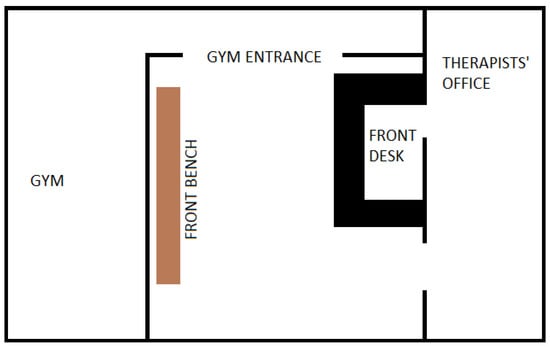
Figure 1
Open AccessSystematic Review
A Systematic Review and Meta-Analysis of the Effects of Race in the Criminal Justice System with Respect to Forensic Science Decision Making: Implications for Forensic Anthropology
by
An-Di Yim and Nicholas V. Passalacqua
Humans 2023, 3(3), 203-218; https://doi.org/10.3390/humans3030017 - 25 Aug 2023
Cited by 1
Abstract
Instances of racial disparities are well documented in the United States’ criminal justice system. This study reviewed the literature and conducted quantitative analyses on the role of race in forensic decision making among practitioners and other stakeholders in the criminal justice system. We
[...] Read more.
Instances of racial disparities are well documented in the United States’ criminal justice system. This study reviewed the literature and conducted quantitative analyses on the role of race in forensic decision making among practitioners and other stakeholders in the criminal justice system. We hypothesized that Black, Indigenous, and People of Color (BIPOC) individuals will be significantly more likely to be associated with adverse outcomes than White individuals. A search strategy was developed and registered before the study commenced. Quantitative data were extracted from eligible studies to estimate the pooled effect size (odds ratio) for the effects of race. A final sample of 11 data sources (published study or dataset) was identified. Decision making by all stakeholders in the criminal justice system, including forensic practitioners, case investigators, and juries were evaluated in these studies. Two datasets evaluated the decision-making process involving forensic psychology or psychiatry, three focused on forensic evidence, four on forensic pathology, one involved forensic anthropology cases, and one involved clinical forensic medicine cases. The pooled odds ratio was estimated to be 1.10 (95% confidence interval: 0.67–1.81), indicating a trivial or negligible effect of race (i.e., BIPOC individuals were no more likely to be associated with adverse outcomes given the current evidence). Importantly, the results of this study do not indicate that bias or disparity related to race does not exist in forensic decision making in the criminal justice system. More research into systemic bias in forensic decision making, especially in relation to race, is needed. Forensic anthropologists are uniquely positioned to study and address racial disparities in the criminal justice system involving forensic science because of its interdisciplinary and multidisciplinary nature. This study highlights the need for further research and advocates for forensic anthropologists to be more involved in the study of the science and the impacts of forensic science rather than focusing on methodological advancement.
Full article
(This article belongs to the Special Issue Contemporary Concerns and Considerations in Forensic Anthropology)
►▼
Show Figures
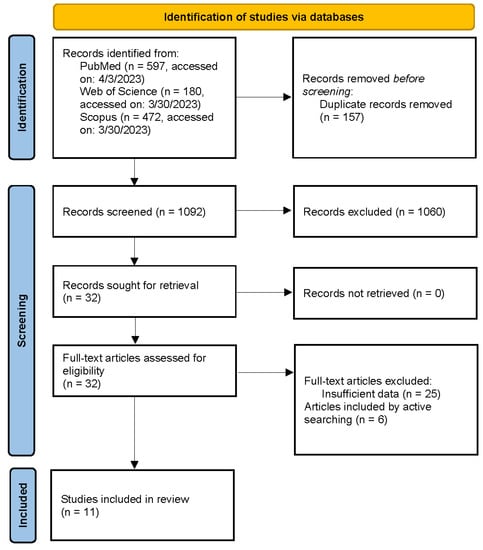
Figure 1
Open AccessArticle
Experimental One-Sided Choppers Relating Neuromuscular Human Abilities to Heart Rates and Technological Evolution
by
Igor Parra, Luisa Morales, Javier Mar and Eudald Carbonell
Humans 2023, 3(3), 193-202; https://doi.org/10.3390/humans3030016 - 03 Aug 2023
Abstract
►▼
Show Figures
The length of time it takes to experimentally make one-sided choppers, as found in the fossil record, bears a linear relationship to the knapping process of fabricating them. In addition, this temporal frame appears to be related to human heart rates measured as
[...] Read more.
The length of time it takes to experimentally make one-sided choppers, as found in the fossil record, bears a linear relationship to the knapping process of fabricating them. In addition, this temporal frame appears to be related to human heart rates measured as beats per minute, which act as a physiological metronome. We achieved these observations, assuming that any paleolithic one-sided chopper has the information needed to estimate, quantitatively, the number of strikes on it. The experimental data allow us to establish the total timing needed for the standard fabricating of any one-sided chopper. We discuss issues derived from these experimental results, showing the evolution of human neurological abilities from 2.4 million years ago to the Modern period via the duration of time needed for making one chopper to that needed to play a 19th-century music score on a piano. Given that the neuronal and physiological distance between both actions differs by a factor of 6, we propose the concept of “technome” to measure human evolution by using methodological homogeneous metrics applied to these two human technologic objects: the chopper and the piano.
Full article
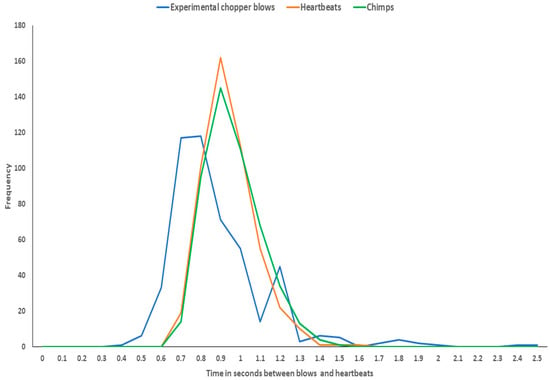
Figure 1
Open AccessFeature PaperArticle
Late Holocene Technology Words in Proto-Athabaskan: Implications for Dene-Yeniseian Culture History
by
Joseph A. P. Wilson
Humans 2023, 3(3), 177-192; https://doi.org/10.3390/humans3030015 - 21 Jul 2023
Abstract
►▼
Show Figures
This study will review previously published Proto-Athabaskan (P-A) linguistic reconstructions related to weapons and ceramics technologies present on both sides of the Bering Strait. Na-Dene (N-D) is a large family of indigenous languages of North America, consisting mostly of the Athabaskan languages of
[...] Read more.
This study will review previously published Proto-Athabaskan (P-A) linguistic reconstructions related to weapons and ceramics technologies present on both sides of the Bering Strait. Na-Dene (N-D) is a large family of indigenous languages of North America, consisting mostly of the Athabaskan languages of the western interior, plus the Eyak and Tlingit languages of the southern Alaska coast. Athabaskan-Eyak (A-E) constitutes a distinct branch of Na-Dene. Dene-Yeniseian (D-Y) is a proposed transpacific family comprised of Na-Dene in addition to the Yeniseian languages of Siberia. Reconstructions pertaining to several specific technologies will be discussed in relation to likely cognates within broader A-E, N-D and D-Y historical contexts. Although D-Y is sometimes assumed to have originated near the conclusion of the Pleistocene Epoch (prior to ~11,500 years BP), this study will refocus fundamental questions on the current Holocene Epoch (after ~11,500 BP), and particularly the Late Holocene (after ~3000 BP).
Full article
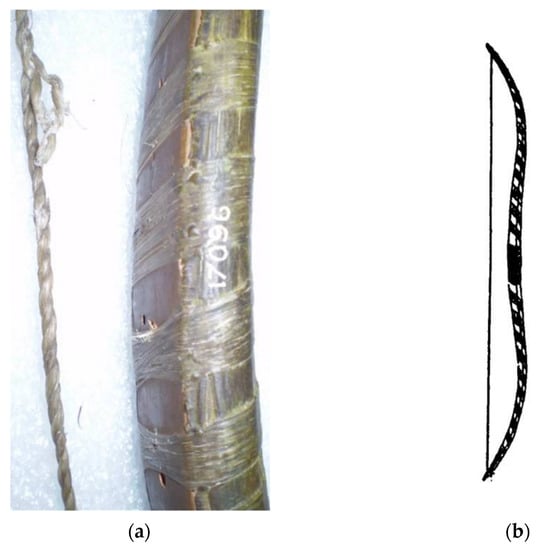
Figure 1
Open AccessEssay
The Missing and the Marginalized: A Biocultural Approach to Forensic Anthropology at the US/Mexico Border
by
Elise J. Adams and Jesse R. Goliath
Humans 2023, 3(3), 166-176; https://doi.org/10.3390/humans3030014 - 07 Jul 2023
Cited by 1
Abstract
Violence and trauma are nestled in human rights violations worldwide. Since the 1980s, several international and domestic organizations have formed to conduct investigations following instances of political unrest and sociocultural violence. These inhumane events are evidenced by structural violence, an invisible trauma that
[...] Read more.
Violence and trauma are nestled in human rights violations worldwide. Since the 1980s, several international and domestic organizations have formed to conduct investigations following instances of political unrest and sociocultural violence. These inhumane events are evidenced by structural violence, an invisible trauma that exacerbates societal discrepancies within a population and can manifest harm to marginalized groups. Structural violence can be observed in both living individuals and through the treatment of human remains. Individuals who are missing or remain unidentified from violent outbreaks are often from marginalized groups. Therefore, a biocultural approach is necessary as it emphasizes the interplay between biology, environment, and culture. Recent work on human rights violations in the Americas has focused on fatalities due to increased migration at the US/Mexico border. Multiple organizations from the United States and other countries have developed strategies to assist in the recovery, identification, and repatriation of migrants. We aim to highlight the biocultural approach in these humanitarian actions, especially the practice of forensic anthropology, with structural violence and humanitarian identification efforts related to the missing and unidentified persons found along the US/Mexico border.
Full article
(This article belongs to the Special Issue Contemporary Concerns and Considerations in Forensic Anthropology)
Open AccessFeature PaperArticle
Shifting the Forensic Anthropological Paradigm to Incorporate the Transgender and Gender Diverse Community
by
Donovan M. Adams, Samantha H. Blatt, Taylor M. Flaherty, Jaxson D. Haug, Mariyam I. Isa, Amy R. Michael and Ashley C. Smith
Humans 2023, 3(3), 142-165; https://doi.org/10.3390/humans3030013 - 28 Jun 2023
Cited by 3
Abstract
Forensic anthropology and, more broadly, the forensic sciences have only recently begun to acknowledge the importance of lived gender identity in the resolution of forensic cases, the epidemic of anti-transgender violence, and the need to seek practical solutions. The current literature suggests that
[...] Read more.
Forensic anthropology and, more broadly, the forensic sciences have only recently begun to acknowledge the importance of lived gender identity in the resolution of forensic cases, the epidemic of anti-transgender violence, and the need to seek practical solutions. The current literature suggests that forensic anthropologists are becoming aware of these issues and are working toward efforts to improve identification of transgender and gender diverse (TGD) persons. The scope of the problem, however, is not limited to methodology and instead can be traced to systemic anti-trans stigma ingrained within our cultural institutions. As such, we call on forensic anthropologists to counteract cisgenderism and transphobia and promote gender equity and inclusion in their practice. In this paper, we identify three areas in which forensic anthropologists may be positioned to intervene on cisgenderist practices and systems: in casework, research, and education. This paper aims to provide strategies for forensic anthropologists to improve resolution of TGD cases, produce more nuanced, gender-informed research, and promote gender equity and inclusion in the field.
Full article
(This article belongs to the Special Issue Contemporary Concerns and Considerations in Forensic Anthropology)
Highly Accessed Articles
Latest Books
E-Mail Alert
News
Topics

Conferences
Special Issues
Special Issue in
Humans
Systems Thinking in Anthropology: Understanding Cultural Complexity in the Era of Super-diversity
Guest Editors: Bob W. White, Sylvie Genest, Maude ArsenaultDeadline: 30 April 2024
Special Issue in
Humans
The Dis-Integrative Revolution: The Rise of Populism, Nationalism, and Cultural Essentialism
Guest Editor: Jack David EllerDeadline: 30 June 2024
Special Issue in
Humans
Feature Papers Defining Humans
Guest Editors: Kevin M. Kelly, Haskel J. GreenfieldDeadline: 31 December 2024

